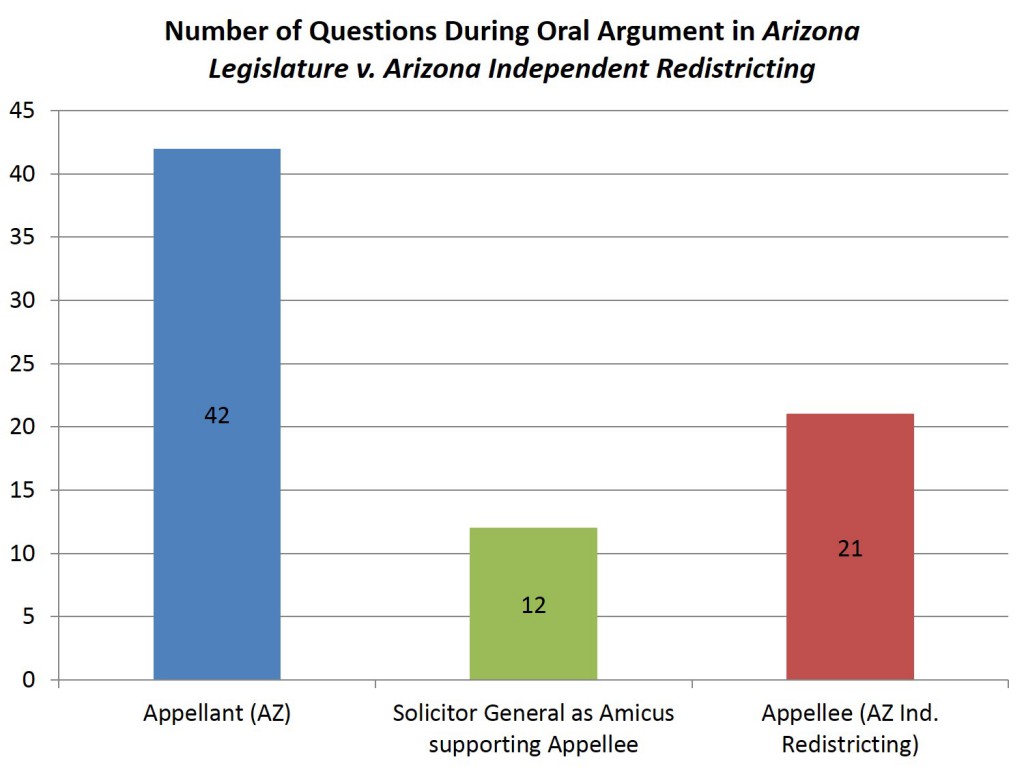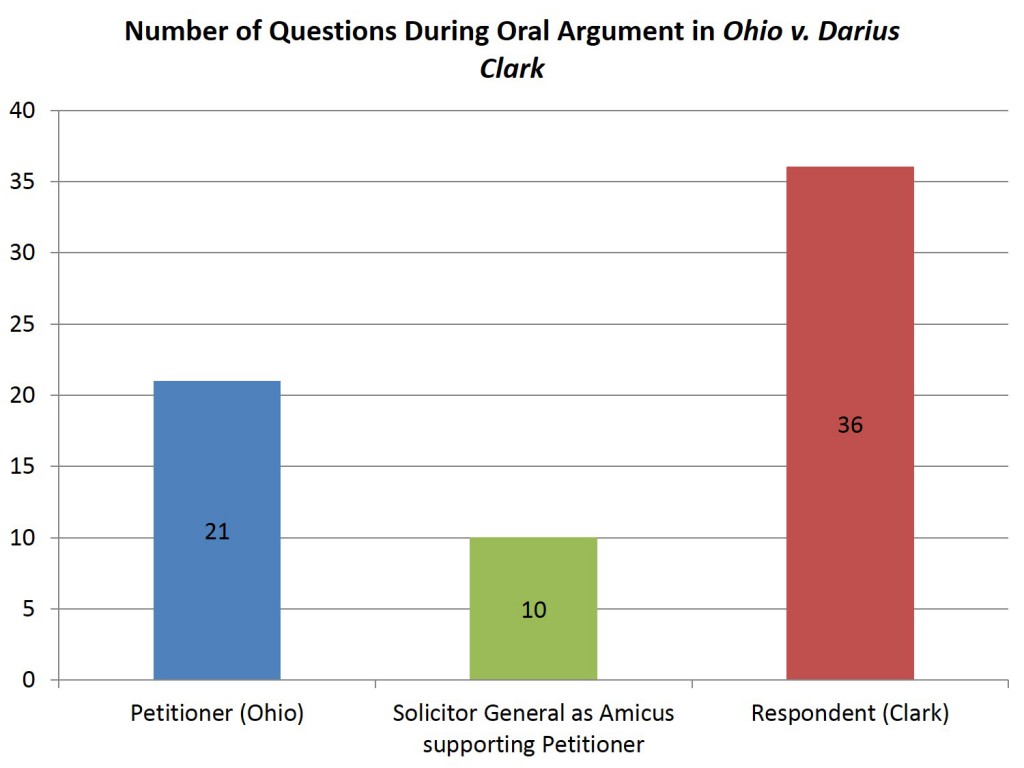The Supreme Court heard two oral arguments on Monday. I’m predicting the winners based on the method of counting the number of questions. After 17 decisions handed down, my predictions have been correct 65% of the time, which means I have fallen off after going 100% correct in the first 6 decisions. Both of today’s cases are very close.
The first case, Arizona Legislature v. Arizona Independent Redistricting, asks (1) Whether the Elections Clause of the United States Constitution and 2 U. S. C. § 2a(c) permit Arizona’s use of a commission to adopt congressional districts; and (2) whether the Arizona Legislature has standing to bring this suit.
Figure 1.

As Figure 1 shows, the total question count favors the Appellee (Arizona Independent Redistricting), whose side (along with amicus Solicitor General) received 9 fewer questions than Appellant (Arizona Legislature).
However, the question count by individual Justice paints a very close case. Four Justices asked the Appellant more questions: Justices Kennedy (+7), Ginsburg (+2), Sotomayor (+5), and Kagan (+17). Justice Kagan’s unusually high number of questions was effectively responsible for the difference in the number of questions between the two sides. Four Justices asked the Appellee’s side more questions: Chief Justice Roberts (+7), and Justices Scalia (+9), Breyer (+2), and Alito (+3). Interestingly, Justice Kennedy asked the Appellant seven more questions, similar to three liberal Justices, while Justice Breyer asked a couple more questions to the Appellee’s side similar to three conservative Justices.
To me, this case is a toss-up on the question count. I’ll go with the Appellant (Arizona Legislature) based on the possible conservative line-up and the difficulty of predicting Justice Kennedy based on his question count.
The second case, Ohio v. Darius Clark, asks (1) Whether an individual’s obligation to report suspected child abuse makes that individual an agent of law enforcement for purposes of the Confrontation Clause; and (2) whether a child’s out-of-court statements to a teacher in response to the teacher’s concerns about potential child abuse qualify as “testimonial” statements subject to the Confrontation Clause.
Figure 2.

As Figure 2 shows, the total question count slightly favors the side of the Petitioner (Ohio), which (along with the SG supporting Petitioner), was asked 5 fewer questions than the Respondent (Darius Clark).
The question count by individual Justice presents another close case. Four Justices asked Petitioner’s side more questions: Chief Justice Roberts (+3), and Justices Scalia (+7), Kennedy (+1), and Kagan (+3). Four Justices asked the Respondent more questions: Justice Ginsburg (+3), Breyer (+1), Alito (+7), and Sotomayor (+8).
Again, this case is a toss-up based on the question count. I’ll go with Respondent (Clark), but I’m not confident in the prediction. Justice Kennedy asked only 1 more question to the Petitioner’s side, and I’m not sure the division will be along ideological lines.

2 thoughts on “Predicting the Winners in AZ Legislature v. AZ Indep. Redistricting and Ohio v. Clark”